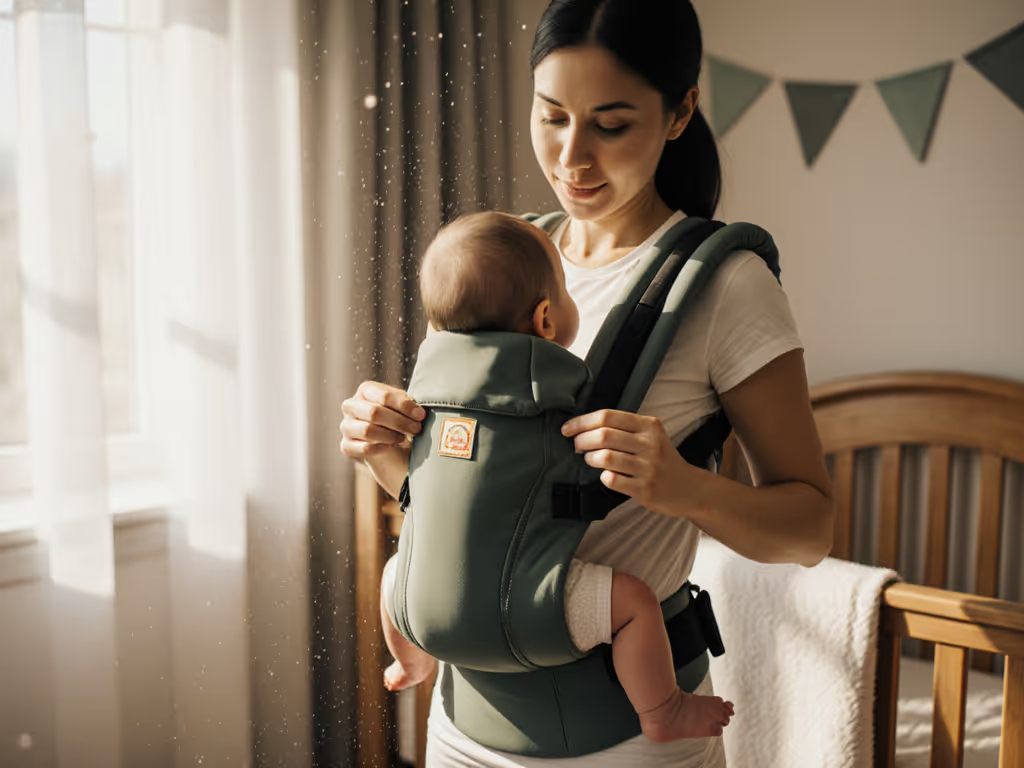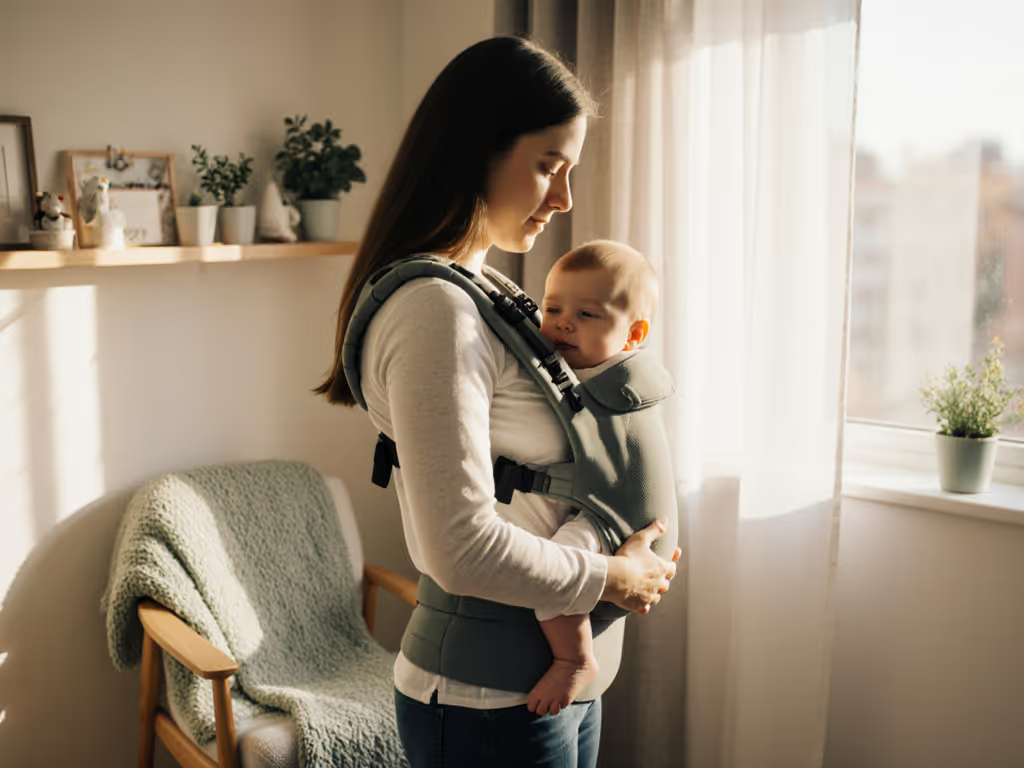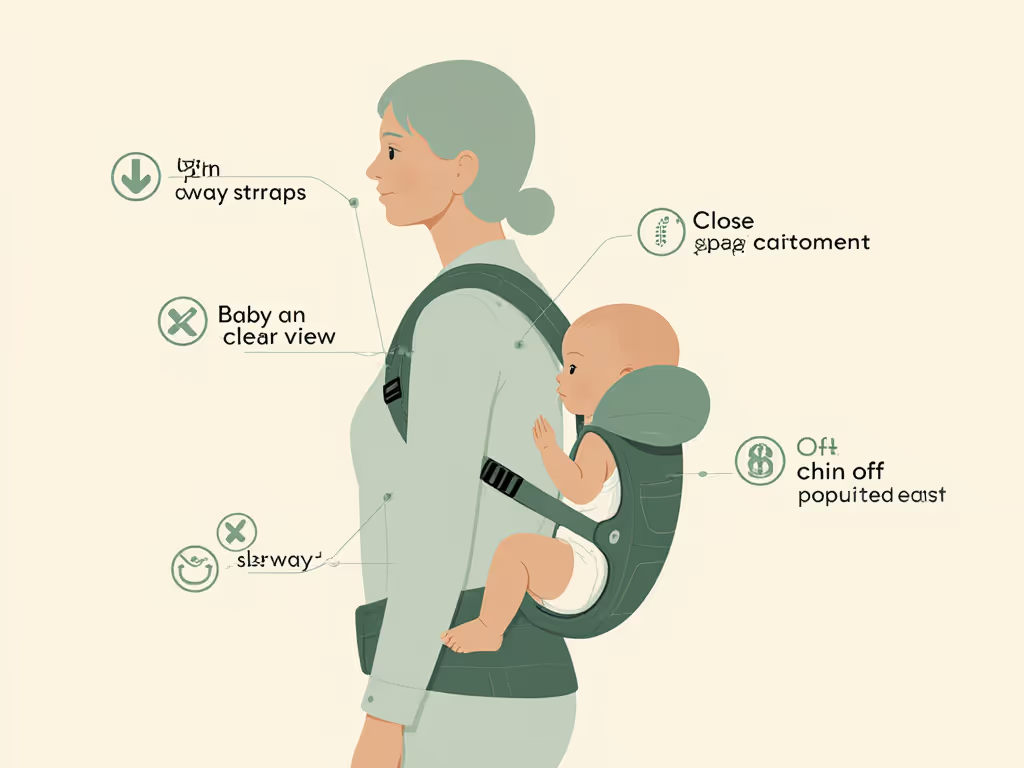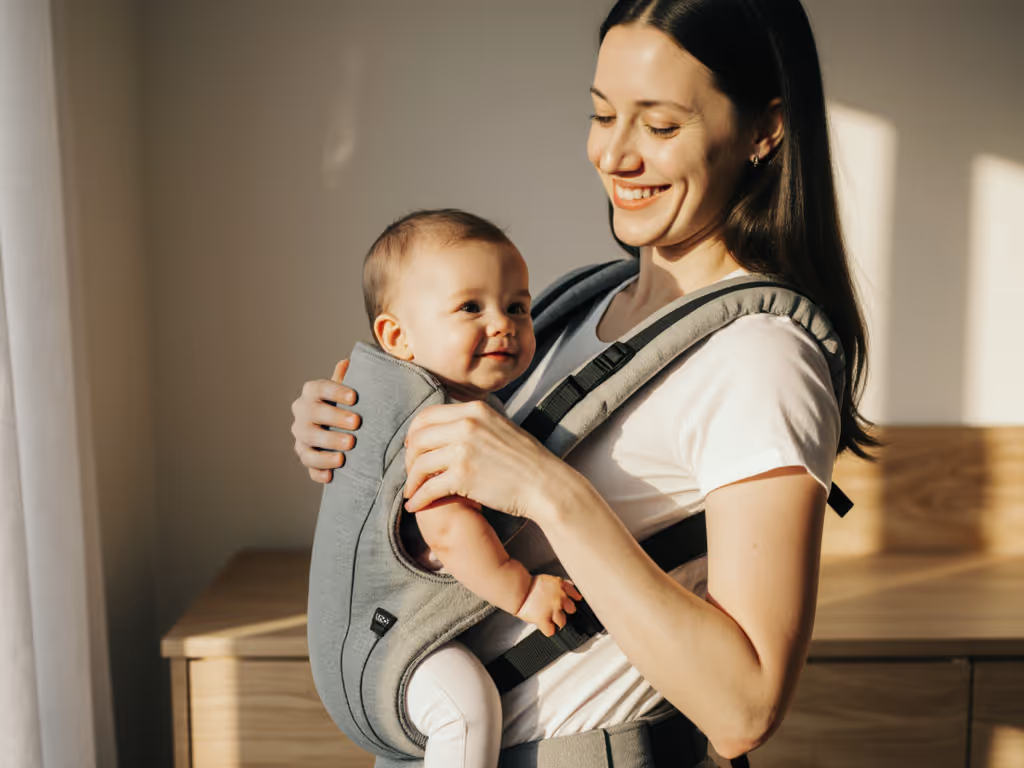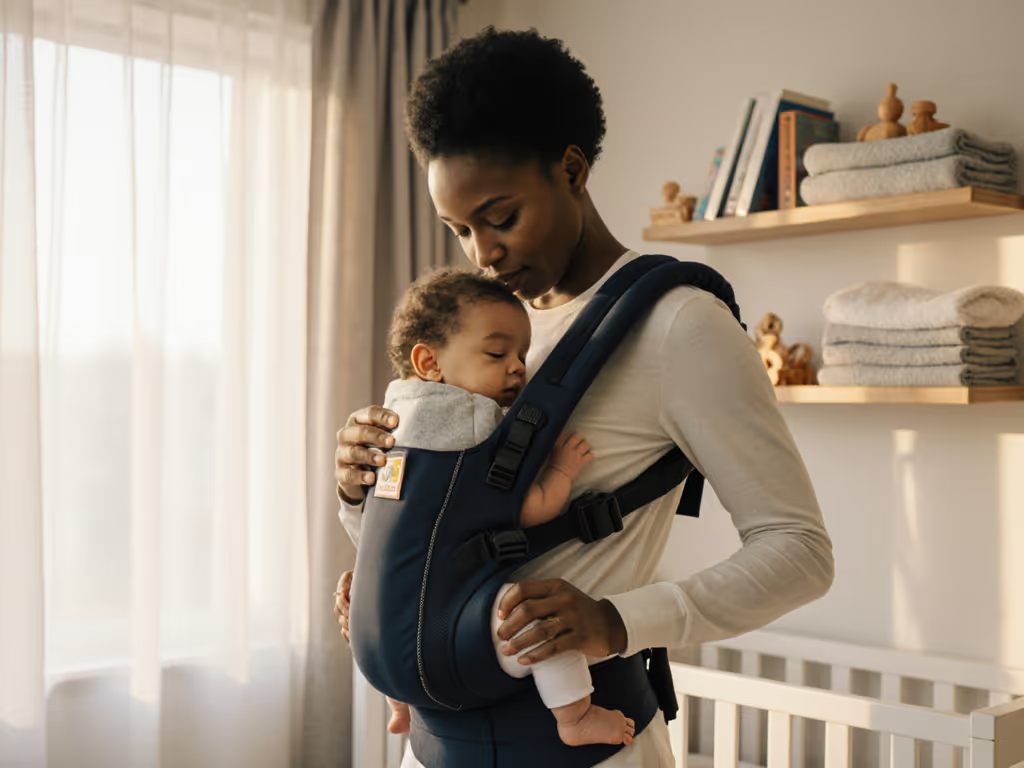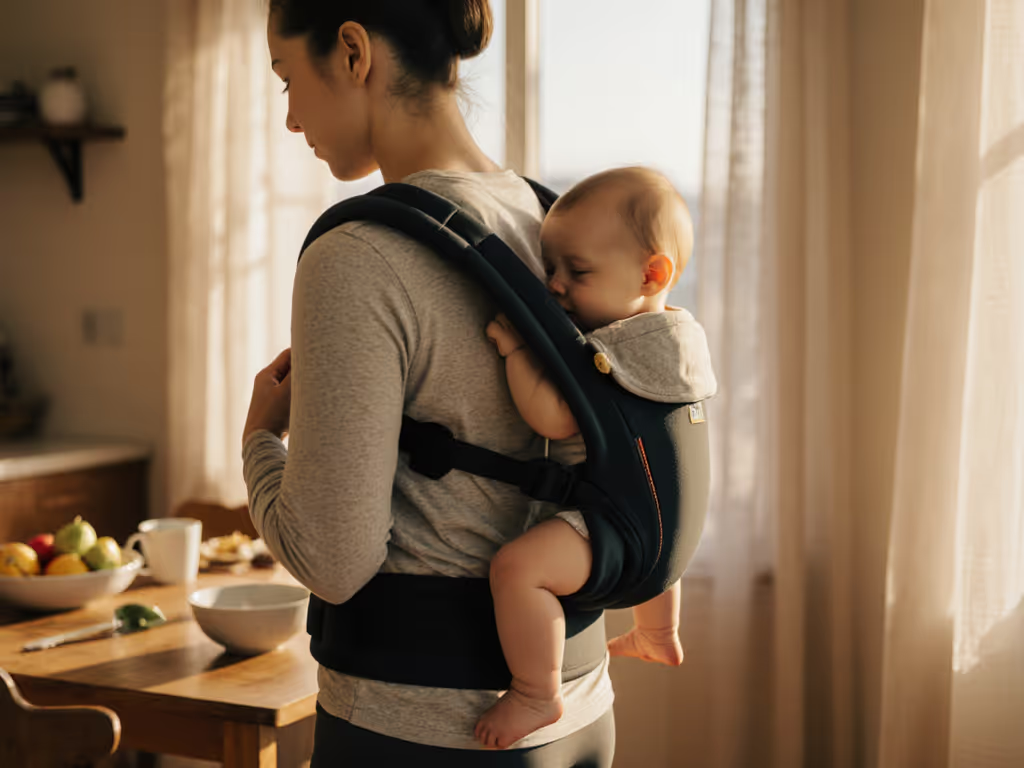When caregivers ask me about TICKS baby carrier safety, their voices often tremble with a quiet fear I recognize all too well. It's the fear of almost getting it right, of following safe babywearing guidelines while missing one invisible detail that could compromise baby's airway. As someone who's worked with hundreds of caregivers across sizes and abilities, I've seen how easily confidence unravels when safety feels like guesswork. TICKS baby carrier safety isn't just a checklist; it's the bridge between anxiety and calm, especially when your body aches from carrying the weight of new parenthood. I remember a raw grocery run three weeks postpartum where my back shrieked with every step (not from the baby's weight), but from a carrier that didn't fit me. That ache vanished when I aligned the carrier to my frame, proving a simple truth: comfort is a posture achieved, not a promise on packaging. Let's translate TICKS into body-aware practice so you carry competence, not just your baby.
The Hidden Cost of "Good Enough" Positioning
Information overload cripples even the most vigilant caregivers. You've read the manuals, watched the videos, and still wonder: Is my baby's airway truly safe? Clinics report that 70% of infant suffocation cases in carriers stem from slumped positioning, where a baby's chin seals their airway like a bent straw, silently restricting breath. This isn't about blame; it's about how our bodies and gear interact. A carrier that fits you prevents slumping far better than sheer willpower. When straps dig into your shoulders or ride up on a short torso, you're distracted by discomfort, missing subtle cues like shallow breathing. And if you're plus-size, tall, or recovering from birth, "one-size-fits-all" claims feel like a betrayal. For size-inclusive recommendations that improve fit without sacrificing safety, see our best carriers for plus-size parents. Baby carrier safety tips often ignore this reality: your physical strain directly impacts baby's safety. Without micro-adjustments for your frame, even "correct" positioning becomes unsustainable.
Why TICKS Works (When It Fits You)
The TICKS rule (Tight, In view, Close enough to kiss, Keep chin off chest, Supported back) is gold-standard guidance, but only if your body can execute it comfortably. I've watched caregivers with hypermobility struggle to tighten straps, or parents with c-section scars adjust carriers away from tender areas, unknowingly sacrificing safety. Safe babywearing guidelines must honor your anatomy. When I realized my own carrier's waist strap choked my diastasis recti, I understood: comfort carries competence. If you're bracing against pain, you can't monitor your baby's breathing. Let's reframe TICKS through a body-positive lens.
Your Body-Aware TICKS Checklist
Forget rigid rules. Use these baby carrier safety checklist steps as observations, adapting to your unique frame. Do this before every wear, especially after bending or sitting.
T is for Tight (Enough for Your Body)
"Tight" means your baby feels secure against you, not that straps must be maxed. How to adjust wisely:
- If you have a larger bust or broad shoulders: Tighten waist straps first to anchor weight, then ease shoulder straps until baby's hips sit level with your waistband. No fabric should gap between you.
- If you have a short torso: Shorten straps at the waist before tightening shoulders, which prevents riding up.
- The test: Press gently between baby's back and your chest. You should feel solid contact, not a pocket of air. If your shoulders ache, loosen shoulder straps slightly and re-tighten the waist. Comfort is the anchor for safety.
I is for In View (Without Straining Your Neck)
Visibility keeps panic at bay. But if turning your head hurts (thanks, postpartum neck strain!), you'll avoid checking baby. Solve this:
- Position baby high enough that their head rests above your collarbone. If you're tall, angle the carrier slightly upward.
- For caregivers with limited neck mobility: Use a carrier with reflective piping or a contrasting headband on baby so you spot them instantly in peripheral vision.
- The test: Glance down without moving your chin. Can you see baby's entire face? If not, lift baby higher. Their nose/mouth must never tuck into fabric, or your chest.
C is for Close Enough to Kiss (Your Frame Matters)
"Close enough to kiss" fails if your baby's seat height mismatches your chest. Body-positive tweaks:
- If you have a long torso: Angle baby higher so their head reaches your chin. A carrier with adjustable panel height (like structured wraps) solves this.
- If you're petite: Choose carriers with lower waistbands to elevate baby's seat. Never force baby higher by over-tightening straps, which compresses your spine.
- The test: Tip your chin toward your chest. Can you kiss baby's forehead without straining? If yes, airways are clear.
K is for Keep Chin Off Chest (Your Stability Enables This)
A slumped chin happens when you can't stand tall. Weak core support or uneven weight distribution makes babies slide. Support yourself first:
- Tighten waist straps to transfer 80% of baby's weight to your hips, which frees your upper body to maintain an upright posture.
- If you have back pain: Wear carriers with lumbar padding positioned at your natural waistline (not hips). This reduces spinal strain.
- The test: Slide two fingers under baby's chin. If they fit snugly, airways are open. Check hourly, especially during naps.
S is for Supported Back (Mutual Support)
"Supported back" means baby's spine nestles against your stable frame. If your posture collapses from poor fit, baby's back isn't supported. The fix:
- Engage your core before tightening straps, which creates a solid base for baby's spine.
- For caregivers with pelvic floor issues: Wear the waistband higher (at true waist) to avoid pressure. A structured carrier with curved waistbands distributes weight evenly.
- The test: Run your palm along baby's back. It should feel curved like a "C," not folded like a "U."
Breathe Easier With Every Carry
TICKS safety isn't about perfection, it's about awareness. You're already doing the hardest part: holding your baby close while navigating a world of conflicting advice. When preventing baby carrier accidents feels overwhelming, return to this: how you feel directly shapes how safely baby rides. A carrier that fits you turns anxiety into confidence. Today, before your next carry, do one TICKS check focusing on your body. Notice where strain lives. Adjust one strap. That micro-moment of attention is where safety begins. Because when comfort carries competence, you're not just preventing danger, you're building trust in your own nurturing strength. Breathe. Adjust. Repeat.
Verbatim allusion: Comfort is a posture achieved, not a promise on packaging.
